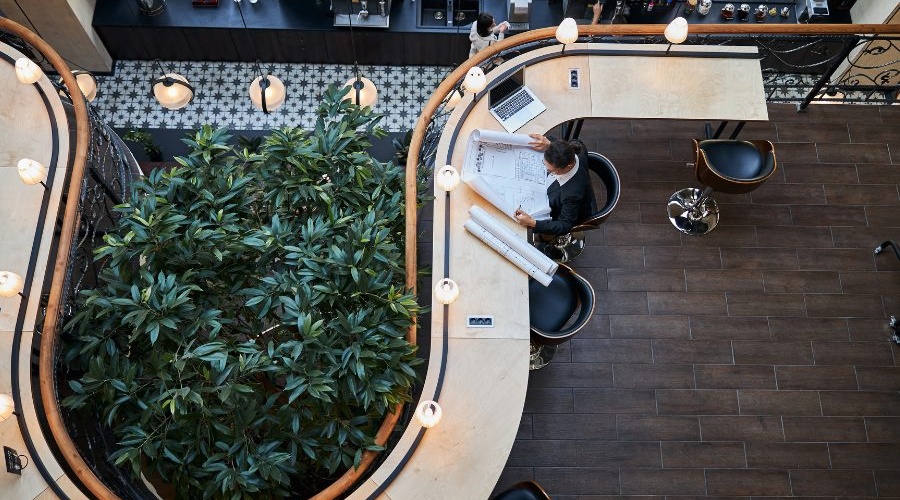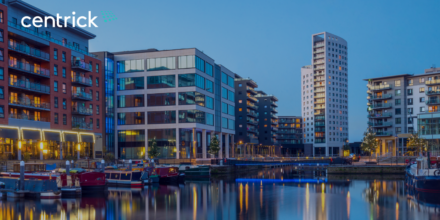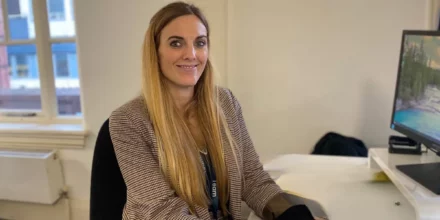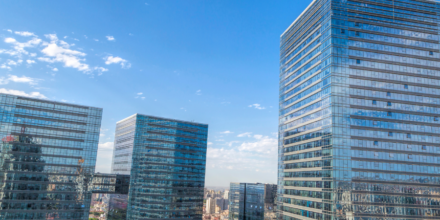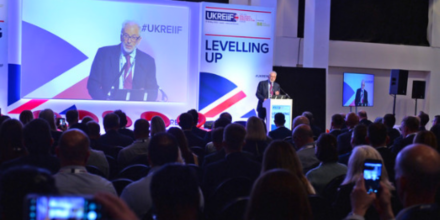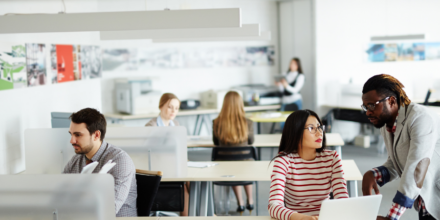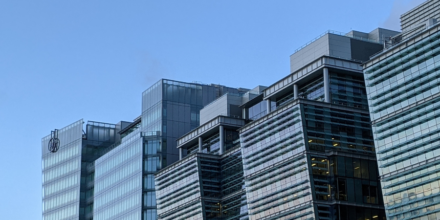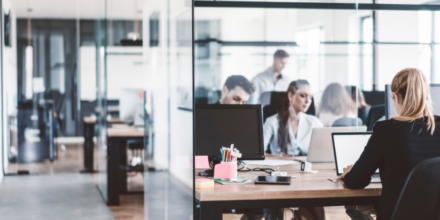When the pandemic hit the UK in early 2020, the office landscape shifted immensely with many of us forced to adapt to new ways of working, nearly two years on and firmly fixed on the future, Centrick Commercial Director Alex Tross sat down with designer Katy Francioso from Estilo Interiors to discuss the future of the office in our new world order.
Is the office dead?
The office isn’t dead but it has drastically changed and will continue to evolve over the next five to ten years. Whilst remote working has proven that many people don’t need to be in a typical working environment to be productive, office environments do offer a sense of community and collaboration that you cannot emulate at home.
“There’s been an interesting journey that we have all been on. Right from the start [of the pandemic], we rushed to set ourselves up at home” said Katy. However, she argues that there is still and always will be a place for the office; “Some people found working from home an excellent experience, and others found it completely negative. I think we learned quite early that there will always be a place for offices; it’s just what they are will change.”
Thoughtful design in the office of the future.
Without considering upgrades, existing offices spaces may struggle to adapt their environment to the new needs of their employees. Whilst the changing needs of your business may warrant an office relocation or refurbishment, Alex Tross emphasises how important it is for landlords and tenants to have an open dialogue.
“It’s my feeling that typically landlords and tenants work in isolation. Landlords create spaces hoping that the tenant will like it,” says Alex. The ‘one-size-fits-most’ approach doesn’t cut it anymore. He adds, “COVID has accelerated the evolution [of the office] because everyone has had to be engaged in the conversation about working from home. [We] have to think more carefully about what the office can do for a business and how it aligns with their commercial objectives.”
One of the key takeaways is how the design of an office can either help or hinder business performance – spaces that discourage collaboration or are uninspired in their design can decrease productivity.
Katy adds, “landlords have rushed to improve their buildings as a whole. We have done a lot of work to convert dead spaces in buildings and improve amenities, like shower schemes, drying rooms or bike facilities.”
The focus for landlords now is to provide flexible space and meet the occupier’s requirements. With many businesses at a crossroads, there is a decision to either cut back and encourage a working-from-home culture or push the reset button and provide a meaningful space that staff can work with, not against.
How spaces affect behaviour (The Google Effect)
We’ve established that most office workers don’t necessarily want a working week to be made up entirely in the office, and even then, a proportion of people will likely choose never to step foot in an office again, even in the office of the future. Still, they do want more flexibility and choice when they are physically at work. Employees’ expectations of their working space have always been present, but the pandemic got us to the point of realisation sooner rather than later.
Flexibility in space is essential here – Katy explains in more detail; “People now realise the value in the office space. People are coming into the office to sit with their teams and collaborate, but they don’t want to just sit in a meeting room all day.”
But what happens when flexible spaces are taken to the next level and office spaces are transformed into activity areas? Modern workplaces, especially those in the digital tech sector, have experienced transformation in their office spaces, blurring the lines between work and personal life. Alex brought up a very relevant case study about the offices at Google Headquarters:
“We noticed around ten years ago there was a shift to attract a new pool of talent. We called it ‘The Google Effect’, where you’d see things like slides, bean bags and colourful furniture in offices.”
‘The Google Effect’ brings a holistic work-life balance approach to the office. In tandem with operating a strenuous hiring process, Google’s offices reflect the needs of the modern millennial working market, who are intrinsically motivated through experiences such as collaboration and belonging. Large, open-plan, and well-decorated spaces without physical barriers to management can help provide a collaborative buzz in the office space, encouraging collaboration and engagement and improving staff retention and performance.
Spaces like open kitchen and dining areas, quiet rooms and even outdoor spaces can help boost the output of an office. Google calls it “casual collision” its design lends itself to forced yet obscure social interaction with those from other teams that wouldn’t typically work together.
However, the office isn’t a playground and shouldn’t be treated as such. When occupiers ask for offices designed with slides, pool tables and novelty meeting spaces, it could easily backfire and negatively affect productiveness. While Google’s office design is shaped by its unique culture, most businesses may not have this lively culture in their DNA.
Conscientious design
Sustainable habits are more widely adopted in all facets of our lives, impacting our purchasing decisions and consumption of energy, water and food. Because of this, they naturally seep into business practices.
Whilst sustainability may seem like a business buzzword, it’s quickly become a big priority for many organisations. Reducing our carbon footprint shouldn’t just happen outside of working hours, and businesses are responsible for implementing practices to save resources and encourage environmental advocacy.
Developers often seek environmental accreditation to ensure compliance with sustainable practices and prove to clients they can comply with corporate social responsibility initiatives.
“At Estilo, we use the SKA accreditation. Achieving certification and accreditation is not easy, and a cost is attached. But people want to show that they are going the extra mile. Occupiers choose accredited developers because it shows a commitment to their employees, investors and the public,” says Katy.
While meeting the basic needs of most users can seem straightforward, designing office spaces for users with special needs, such as mobility, and visual or hearing impairment can be more complex, especially when designing proactively. Deploying measures to suit the needs of disabled staff is often done on a reactive basis, assessing an individual user’s requirements on an ad-hoc basis.
However, quick fixes can be implemented in the office to create an inclusive working environment for all users, irrespective of disability. Height-adjustable desks can be used in place of hot desks, and wall sockets can be installed at waist height instead of near the ground to allow users with mobility issues to work comfortably. Round tables can be used in meeting rooms, allowing everyone to face each other and, in turn, make it easier for lip-reading and communication.
The future of collaborative working spaces
In short, the office is still very much thriving but is a different landscape than what we’re used to. Exacerbated by the pandemic, individuals are looking for office spaces that are versatile and promote collaboration, especially during a time when our social interaction was limited and the Future of the Office will need to facilitate that in spades.
To summarise, Alex said,
“I think tenants want spaces that feel like more than an office, and everything we can do to provide that, like cycle racks, shower facilities or roof terraces, can help make the day more interesting for its users. I think as much as that [developers] can put into offices, the better they will be for the occupiers.”
Are you thinking about how to get the best from your office space? The evolution of the office is exciting and happening right now.
Get in touch today to find out how we can help.
